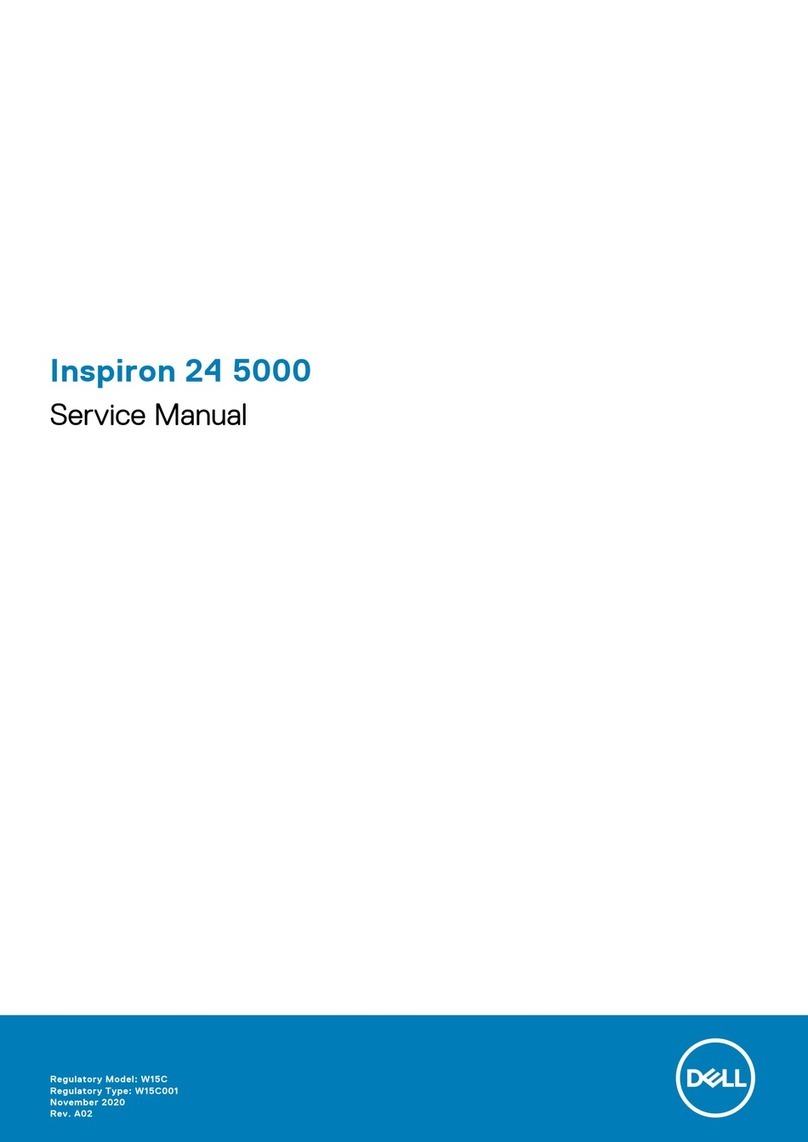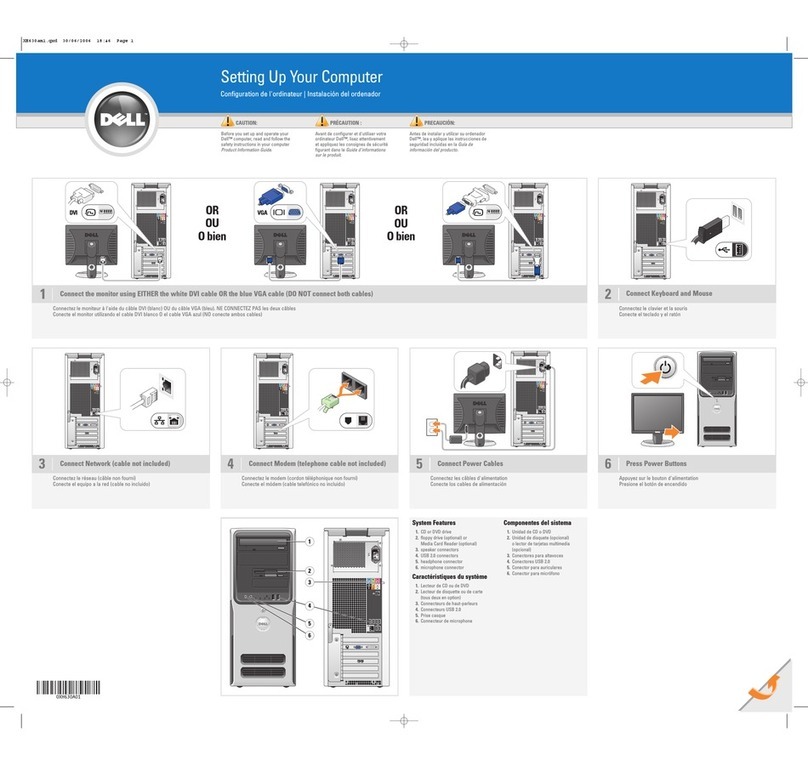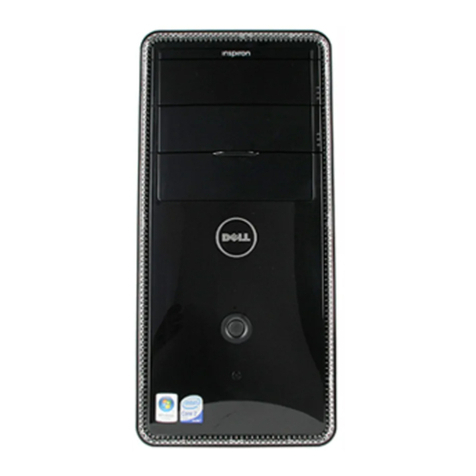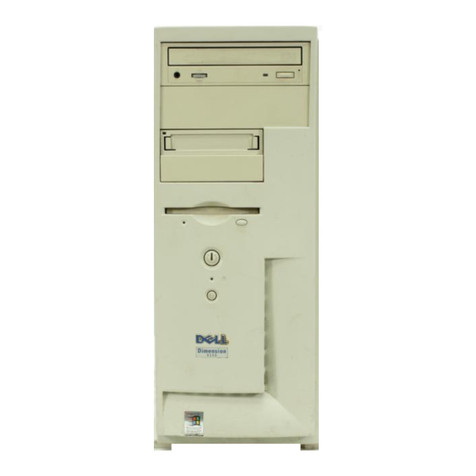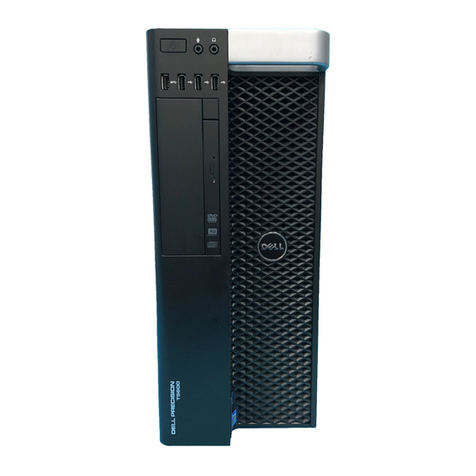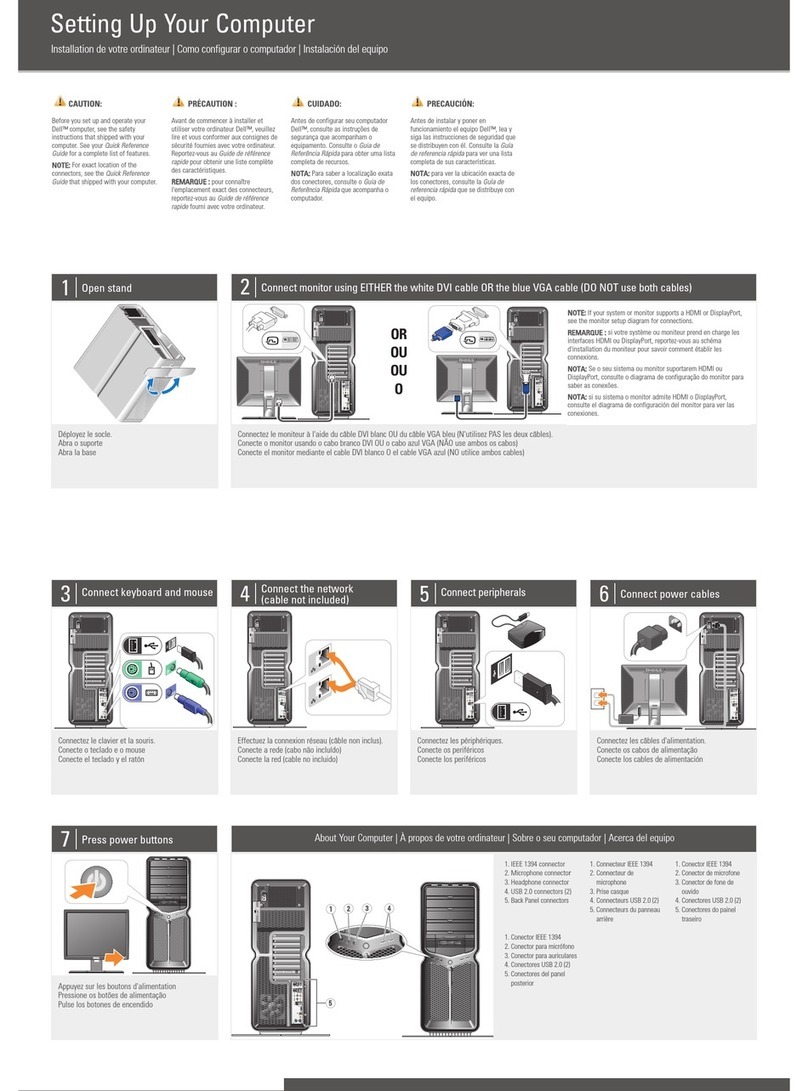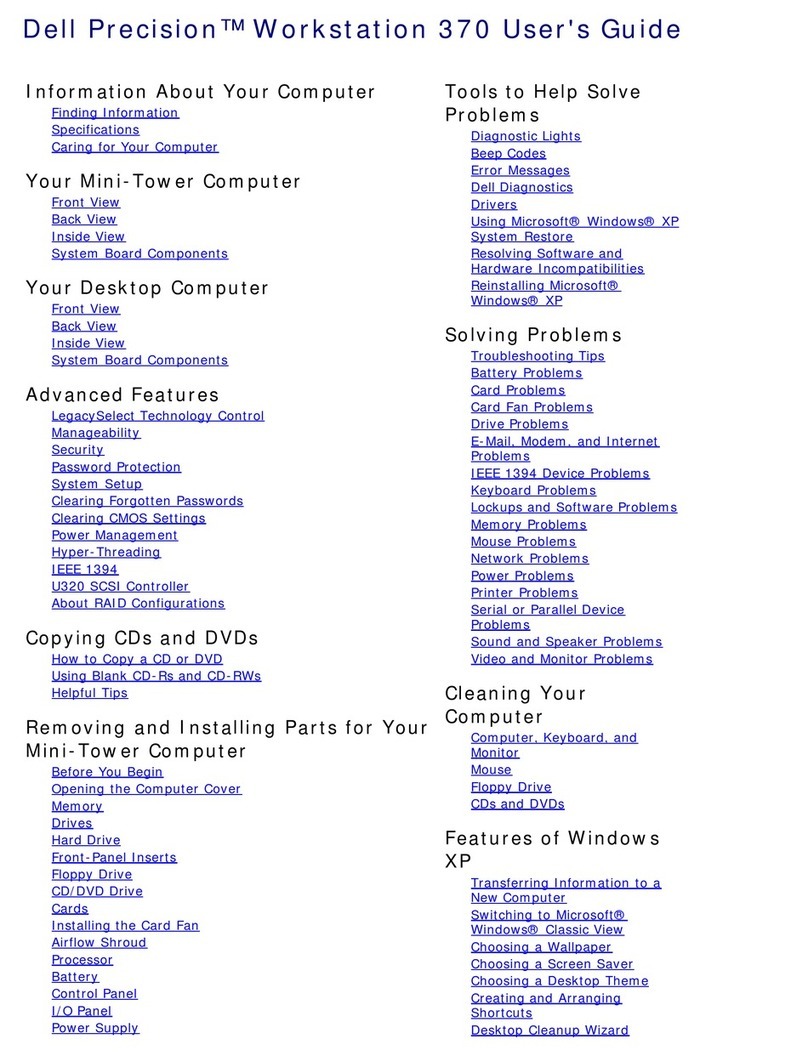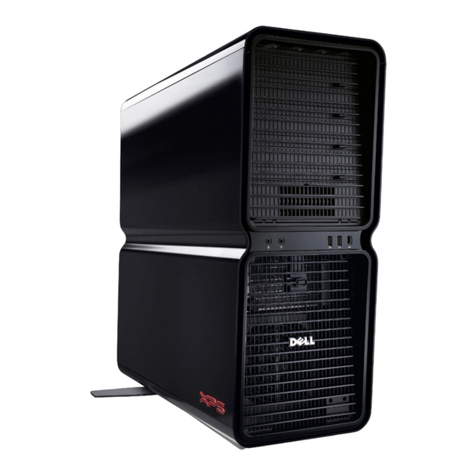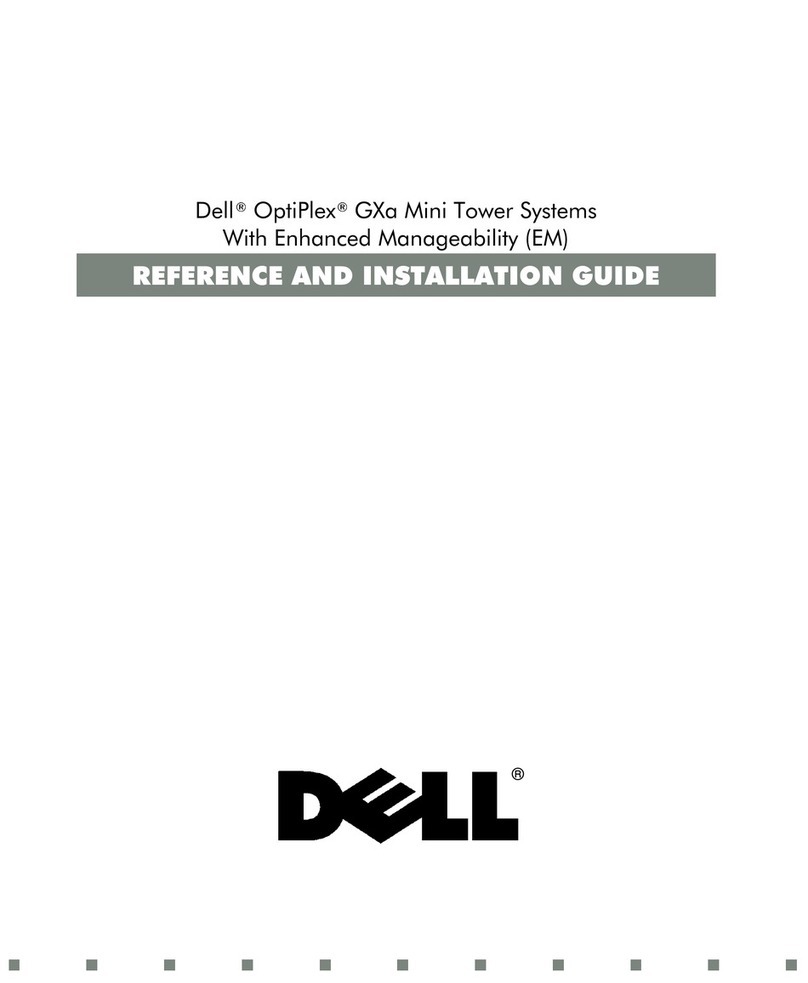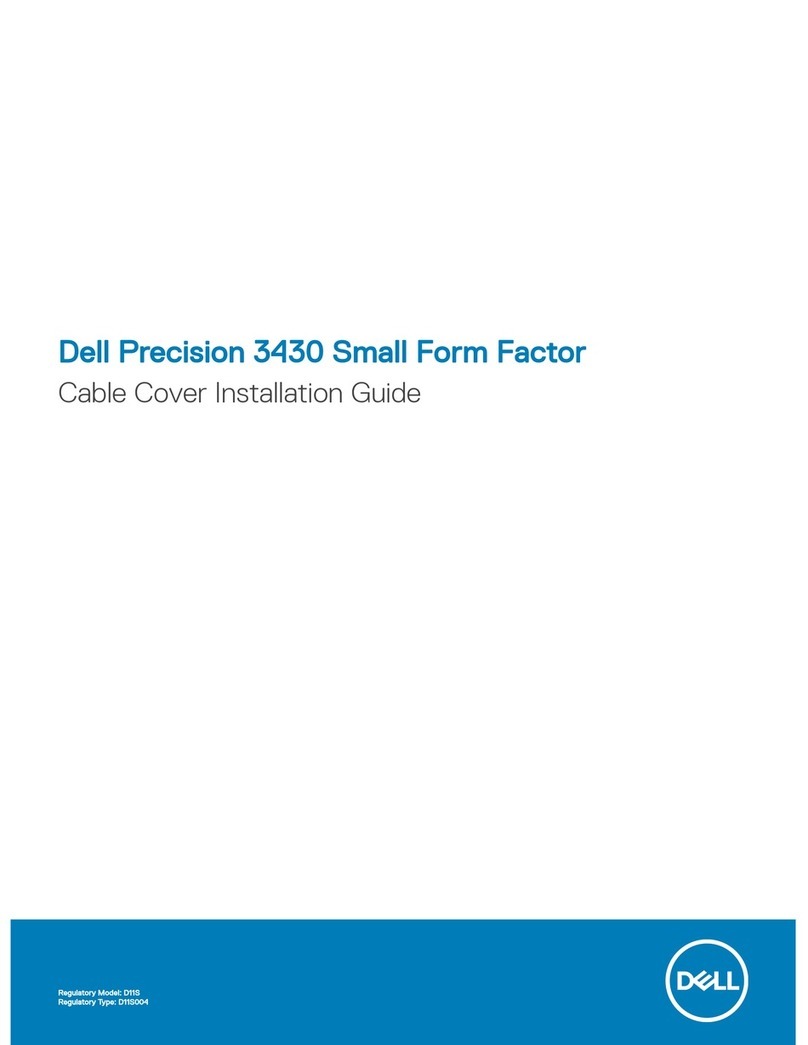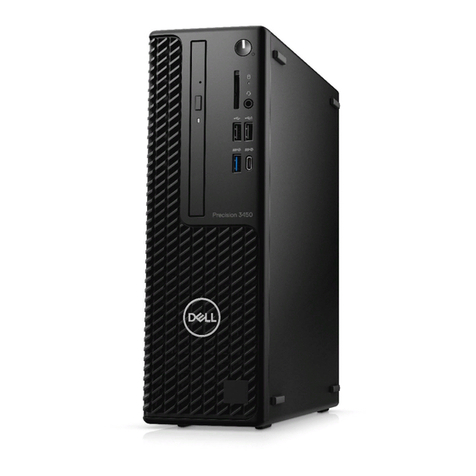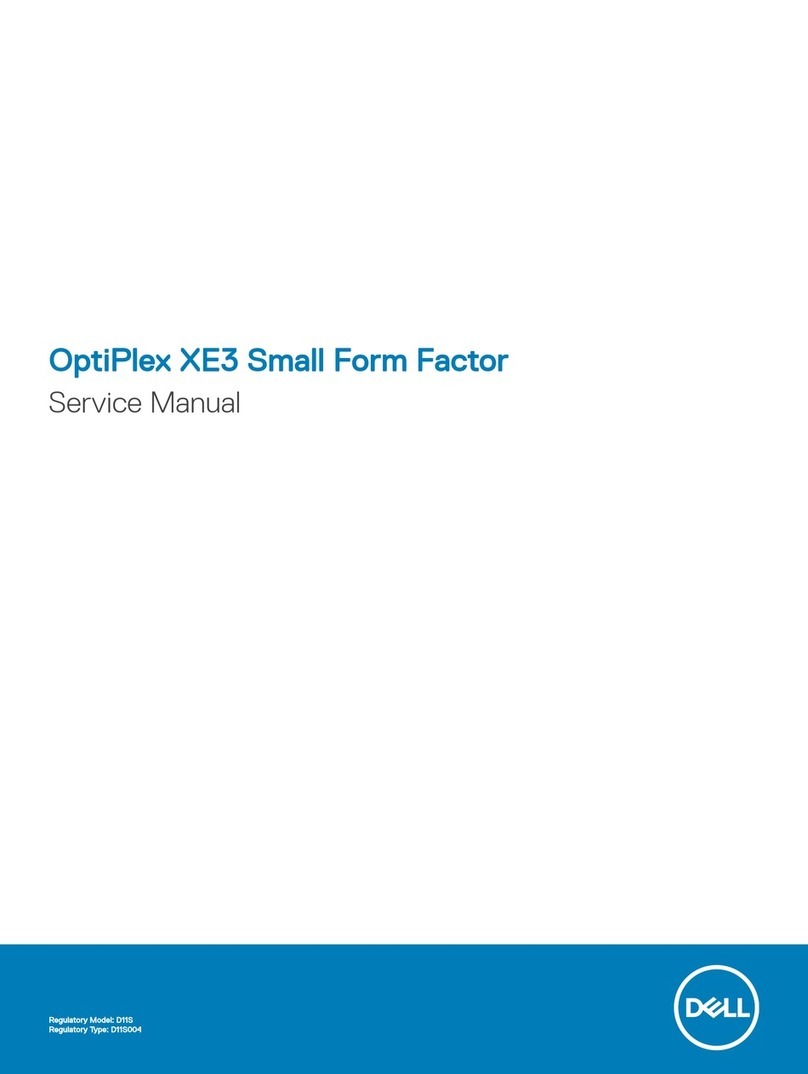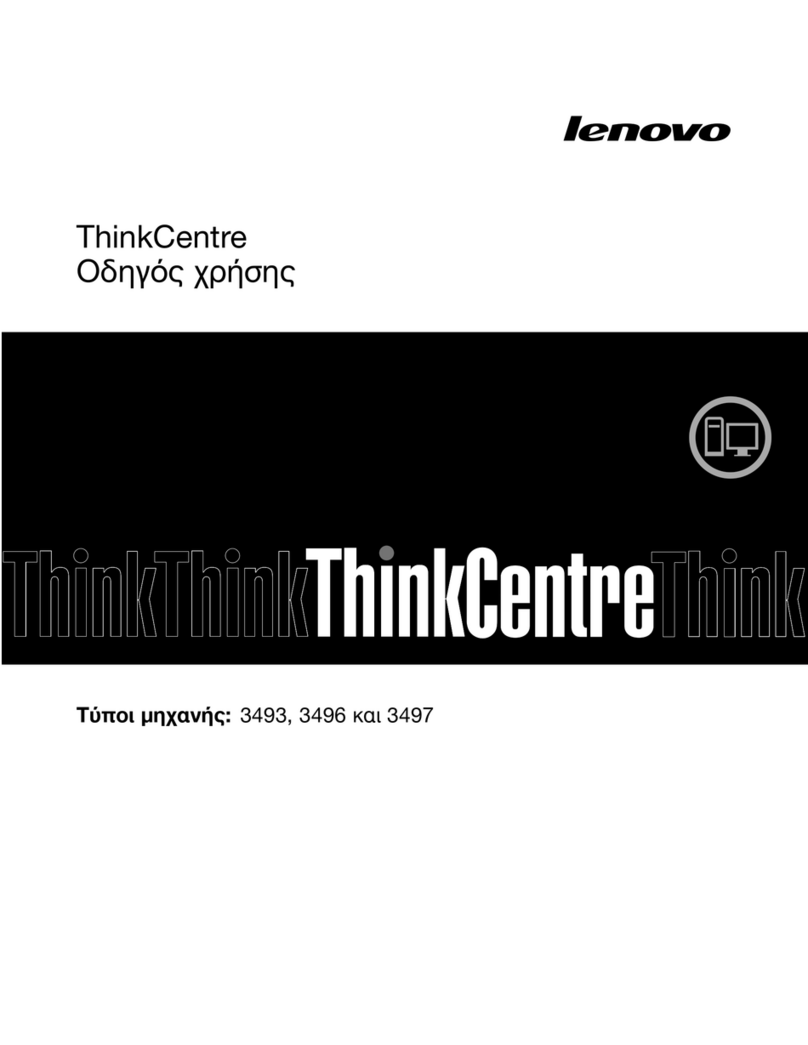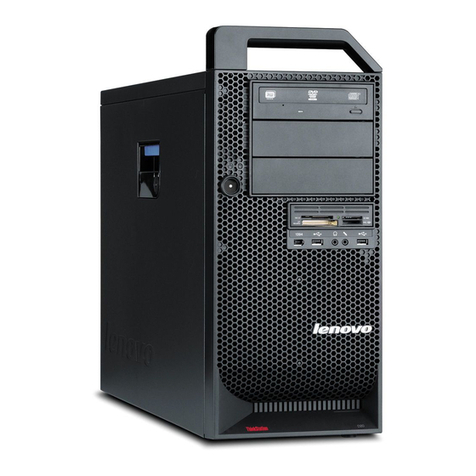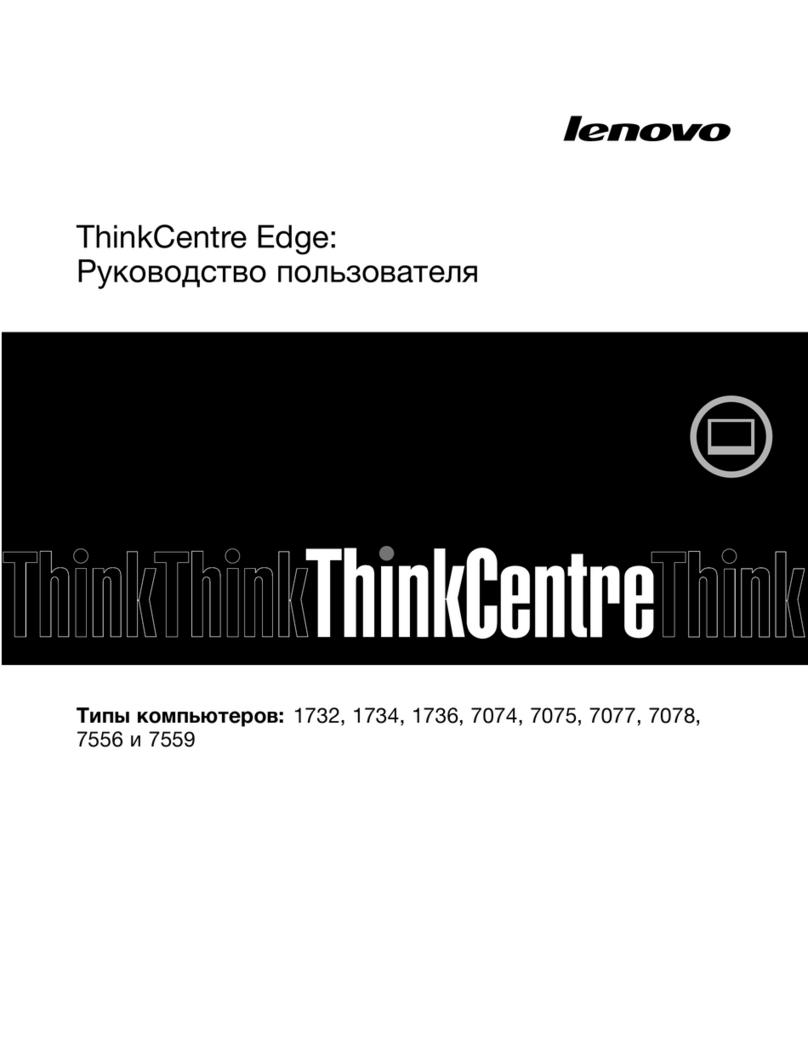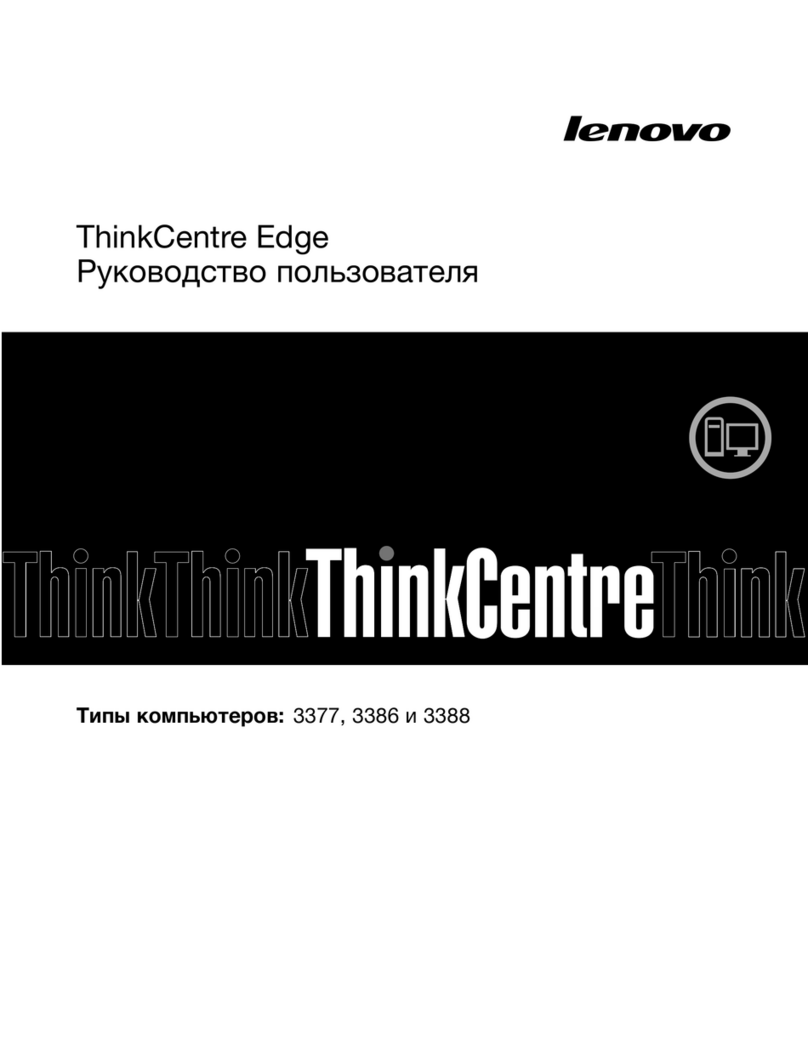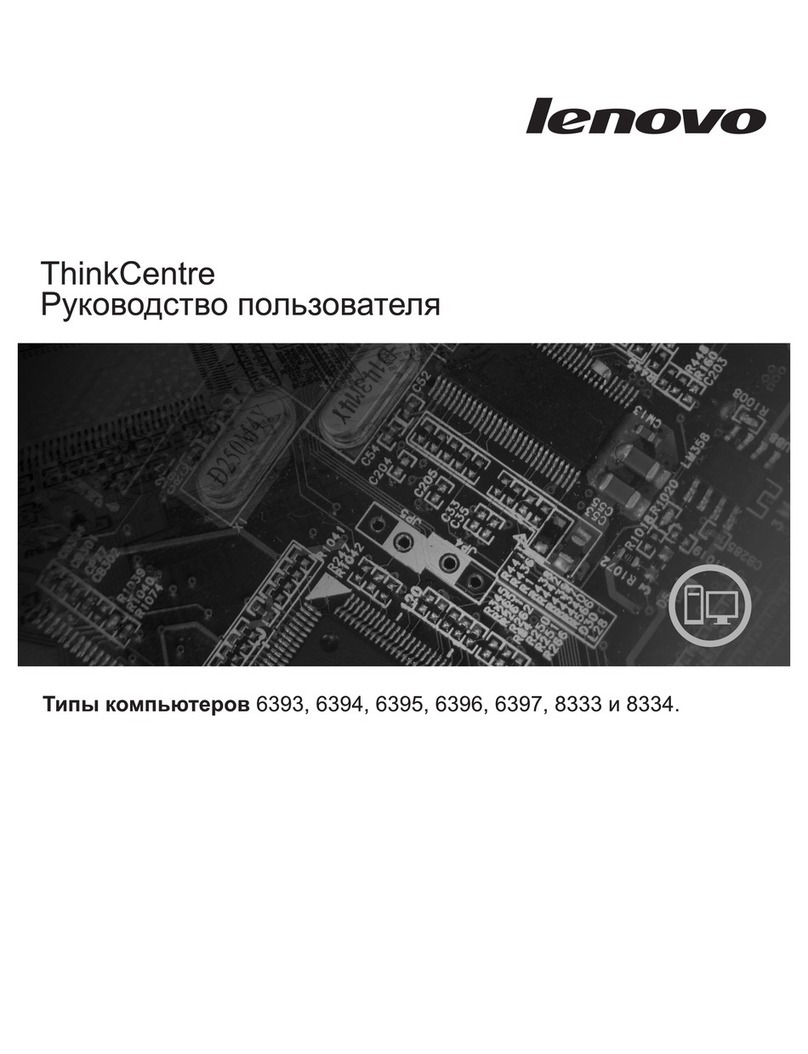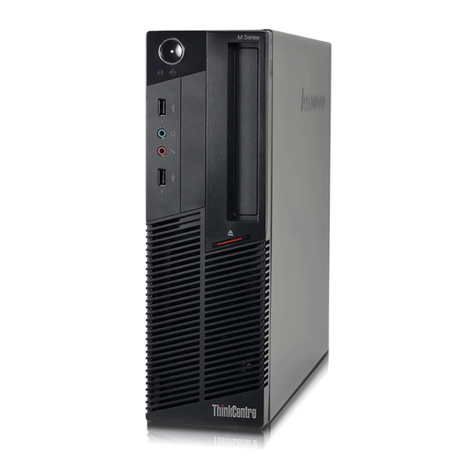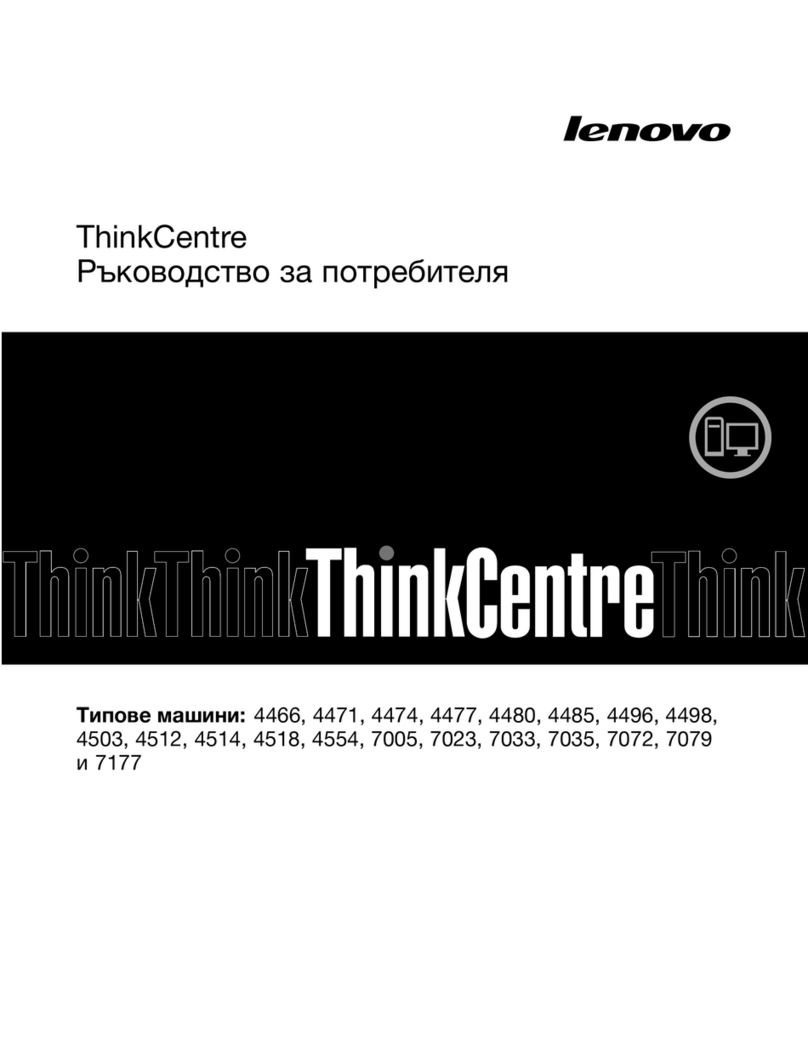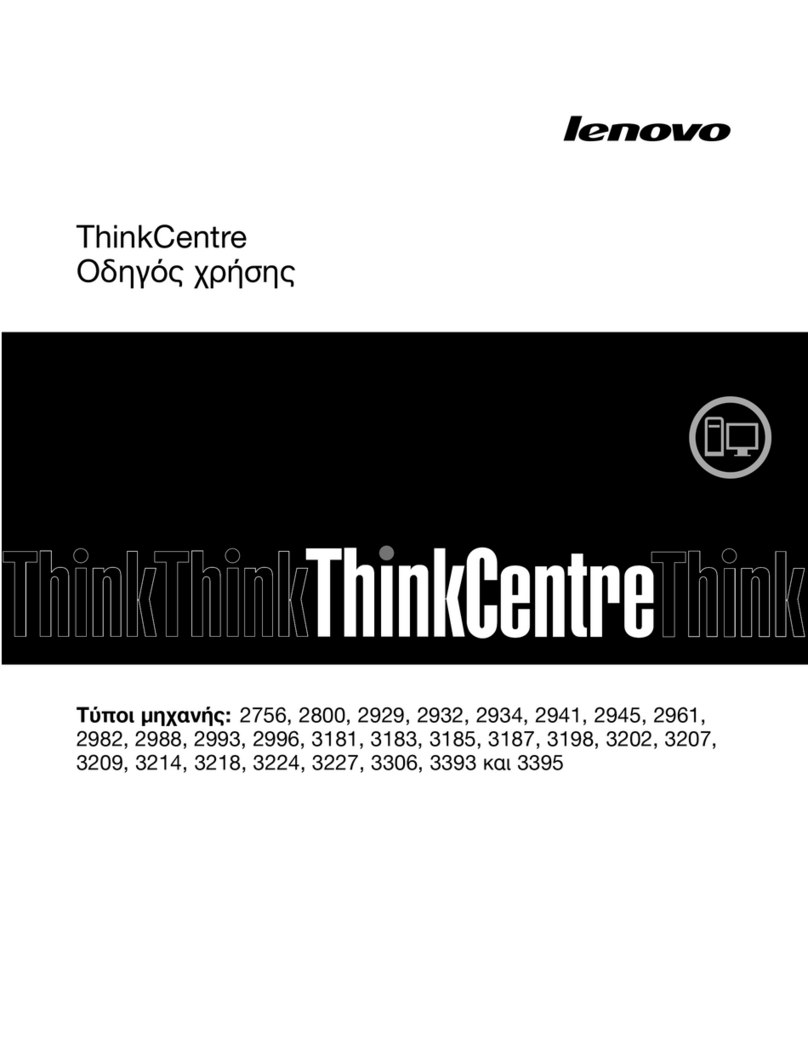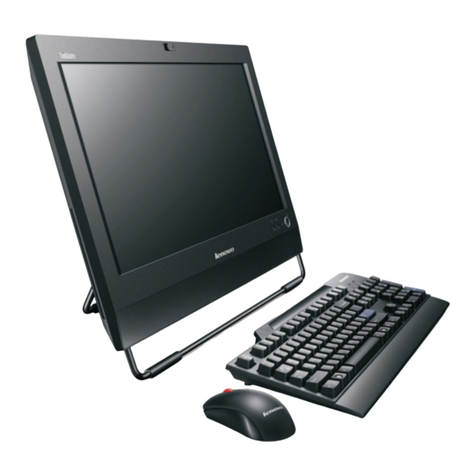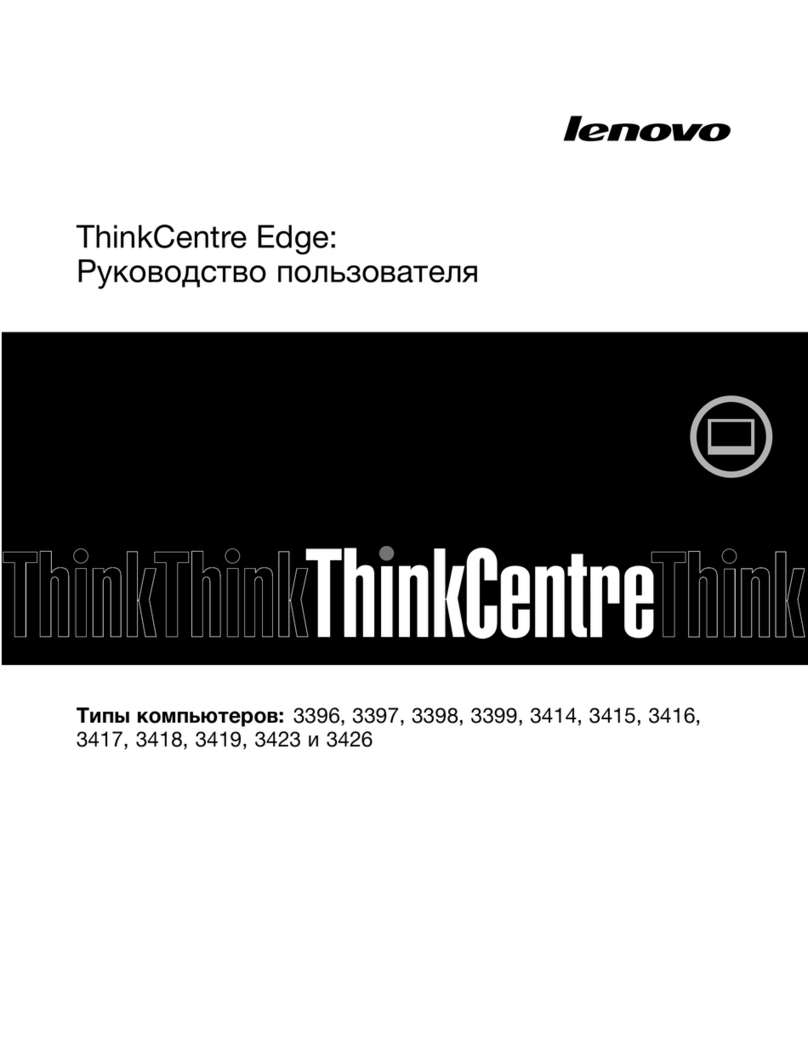
Dell Precision™T5500/T7500 Tower Workstations Technical Guide
PLEASE SEE IMPORTANT INFORMATION ON PAGE 37
PAGE 9OF 37
For dual socket workstations, an optional second processor brings the addition of three further
channels of memory, increasing overall bandwidth (as there are now six channels) and
memory scalability.
Processors can also access cache memory differently to previous generations of Intel Xeon
processors. Each processor has its own cache memory (L2 cache) just like before but now the
shared cache (L3 cache) can be accessed by all cores of a processor whereas older
generations saw shared cache limited to pairs of cores within a processor. Intel’s new Direct
Cache Access enables active cores to use cache of inactive cores, increasing availability of the
total amount of cache memory to the processing resources.
Intel Nehalem processors now have a power control unit inside the CPU providing a means to
better manage power. On previous processors each core had to run at the same clock speed
but Nehalem processor can be managed individually by the system and run at different speeds
to save power or boost performance using Intel’s new Turbo mode.
With the launch of Nehalem, Intel is bringing back a new and revised HyperThreading solution
enabling a quad-core processor to have eight logical cores.
Benefits for Dell Precision workstation users
Fast DDR3 memory and tightintegration of memory and processor means that CPU intensive
workstation applications can benefit from a highly efficient architecture.
Adding an optional second processor is expected to improve performance of multi-threaded
applications like Adobe Photoshop and can improve the ability of the system to move large
amounts of data to the processors due to increased memory bandwidth.
The new cache memory architecture and the ability to share this cache memory across
processor cores will benefit demanding workstation applications by providing a solution that will
help reduce the number of times the system needs to address the main memory during heavy
compute cycles as more information can be temporarily stored closer to the processor(s)
Managing processor cores individually means that single-threaded applications running on
multi-core processors can do so efficiently when other cores are not used to their maximum
potential. The system can shut the inactive cores down, or if the system is well inside its
thermal envelope, the active core(s) can have their clock speeds increased temporarily to
boost performance, limited only by overall processor temperature and power consumption
which is monitored by the system. This is Intel’s Turbo Boost mode for Nehalem processors. As
the Dell Precision workstations have excellent thermal designs and our heat-sinks for the
processors are highly advanced and efficient it is expected that Dell Precision systems will be
able to provide Turbo Boost mode for extended periods of time, which can help boost
performance for a wide variety of workstation applications. As many applications (even
workstation applications) are still single threaded, Intel Nehalem offers an architecture that can
benefit these and multi-threaded alike. For those applications that benefit from HyperThreading
the return of this feature will see performance improvements
